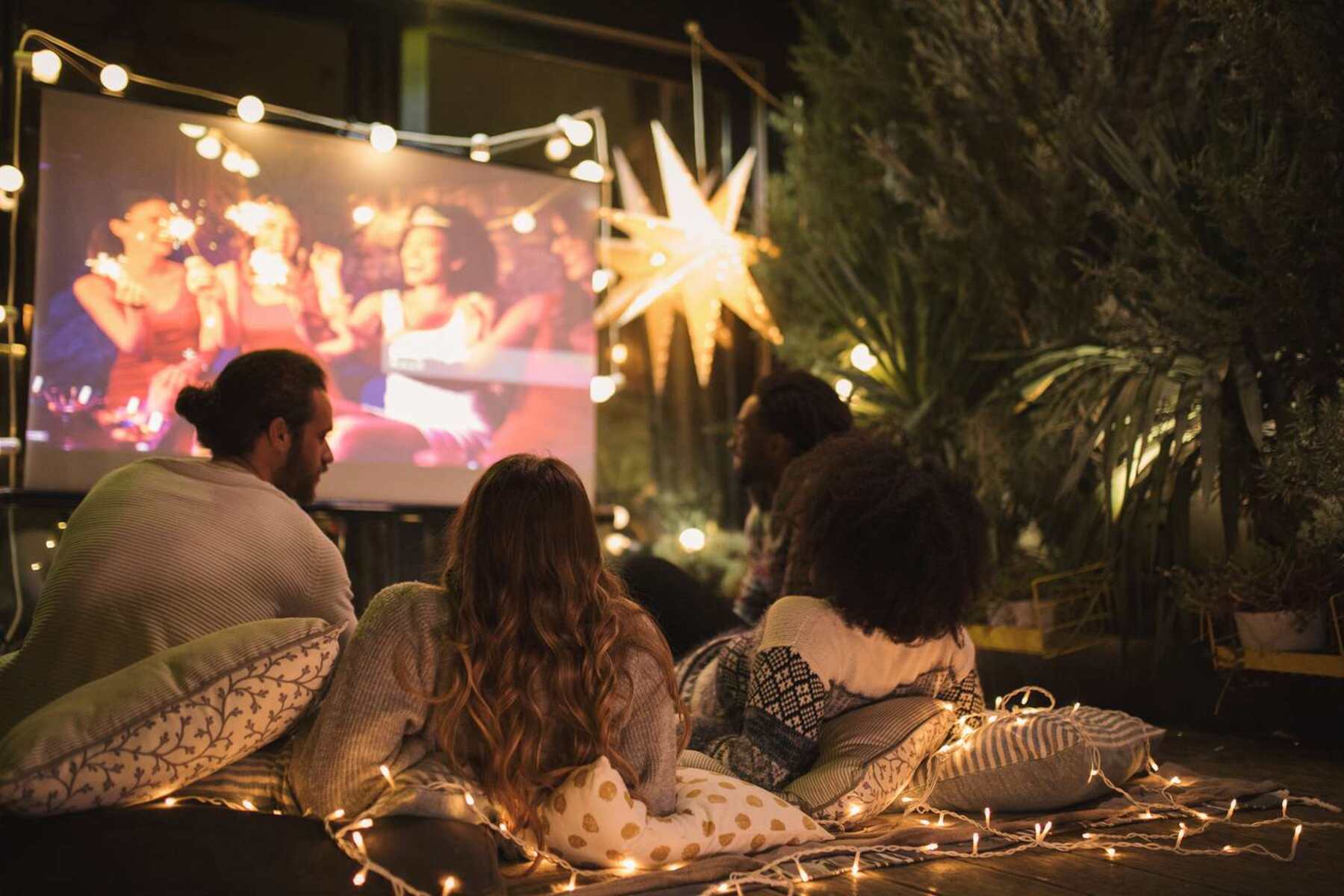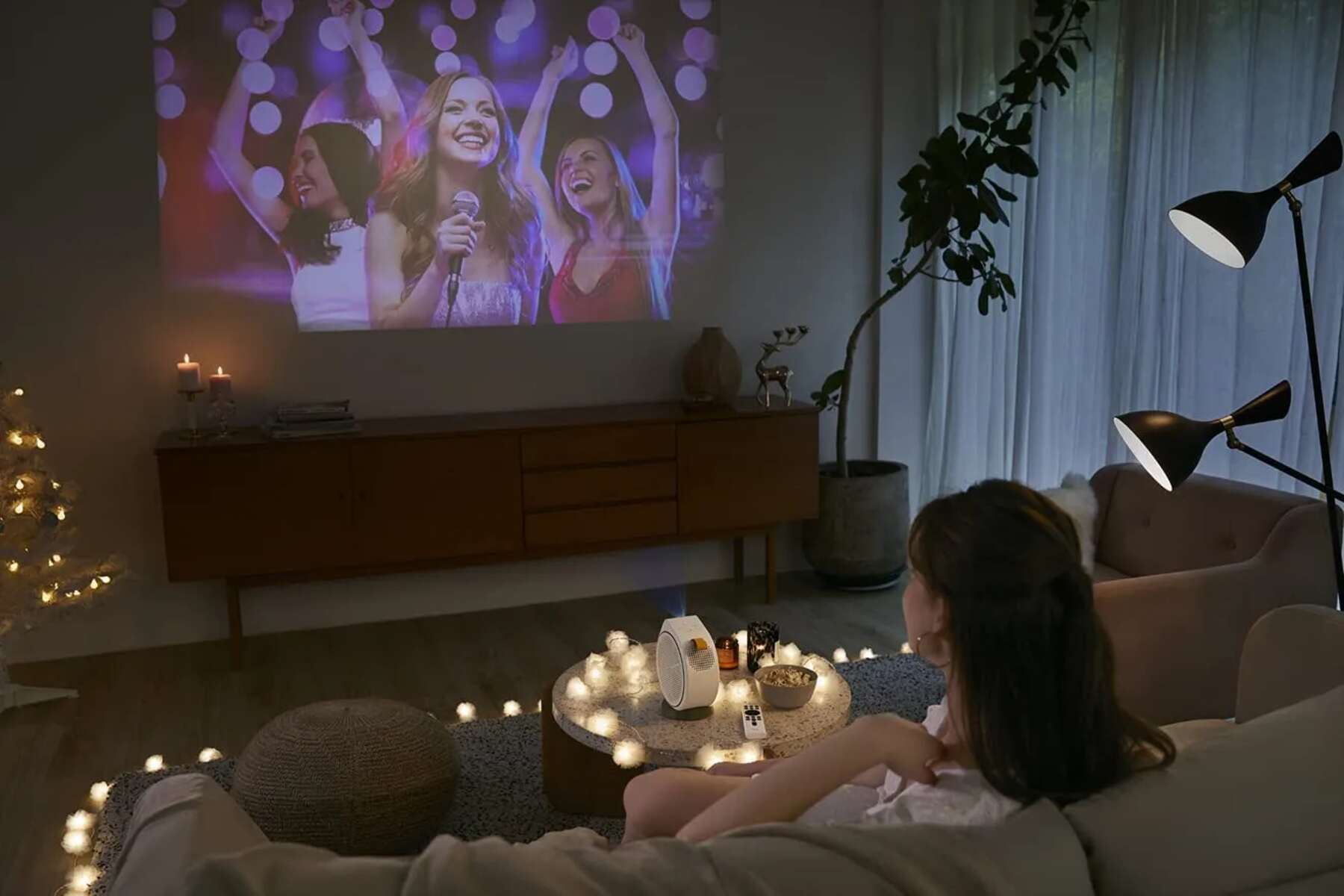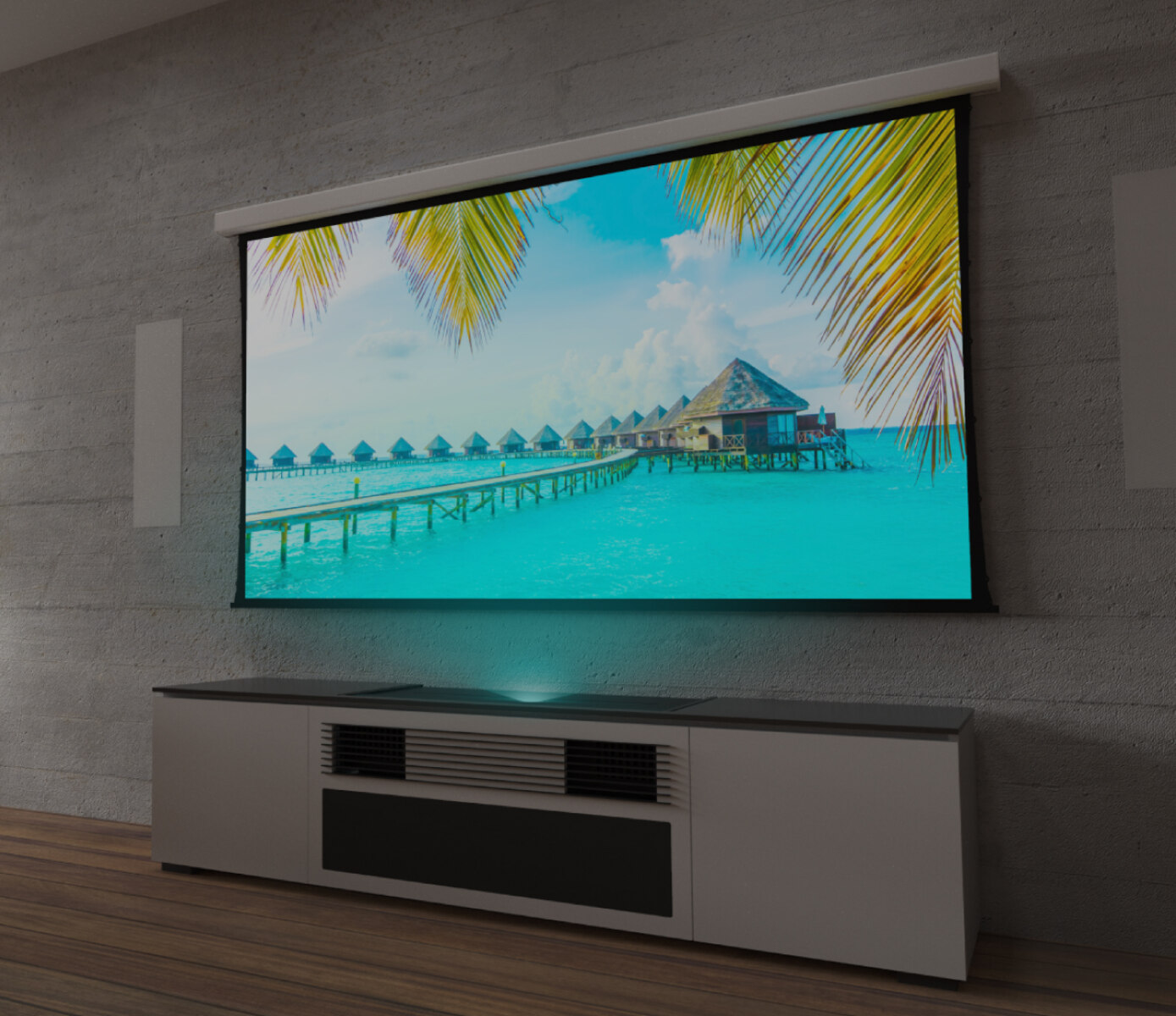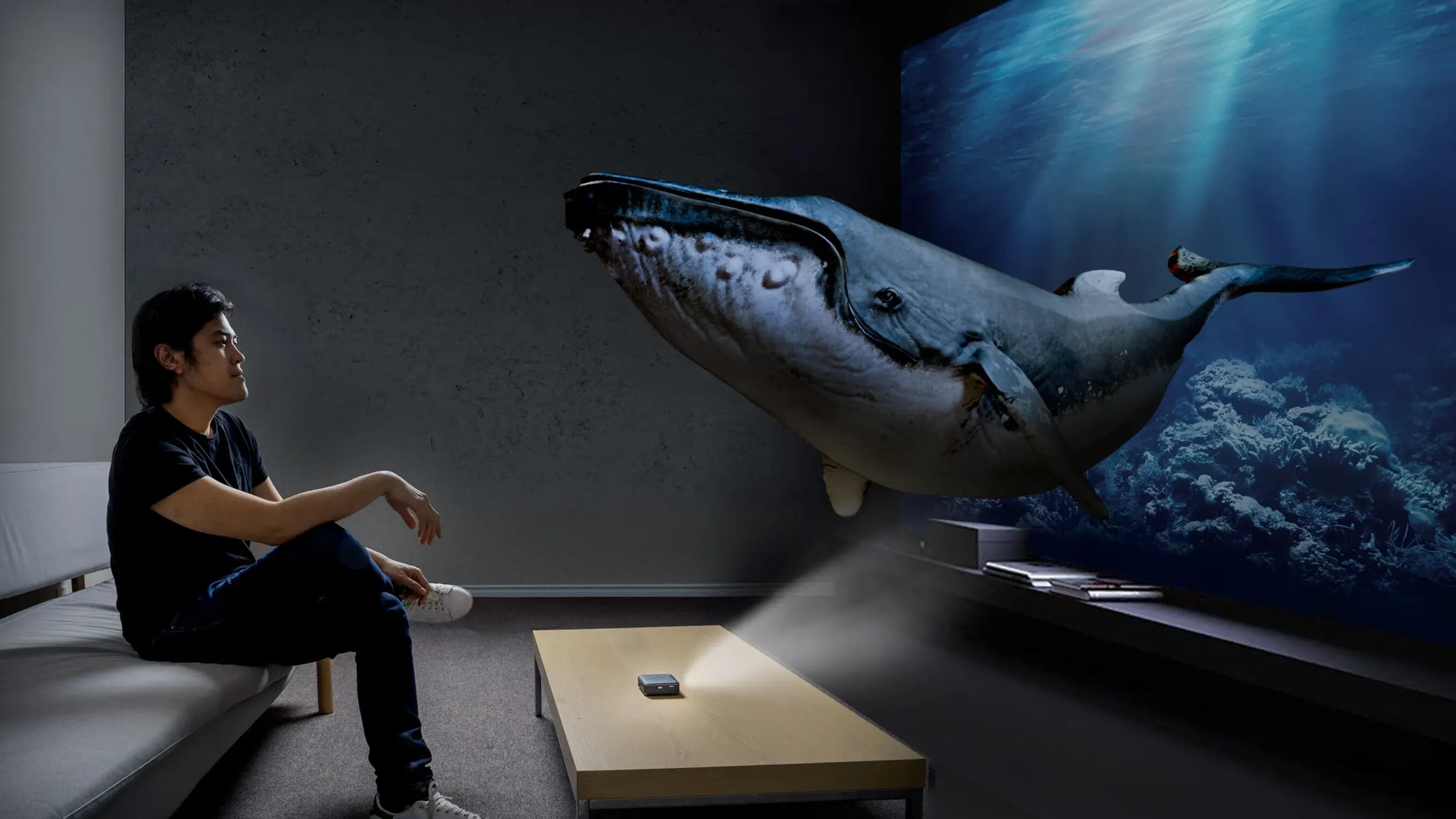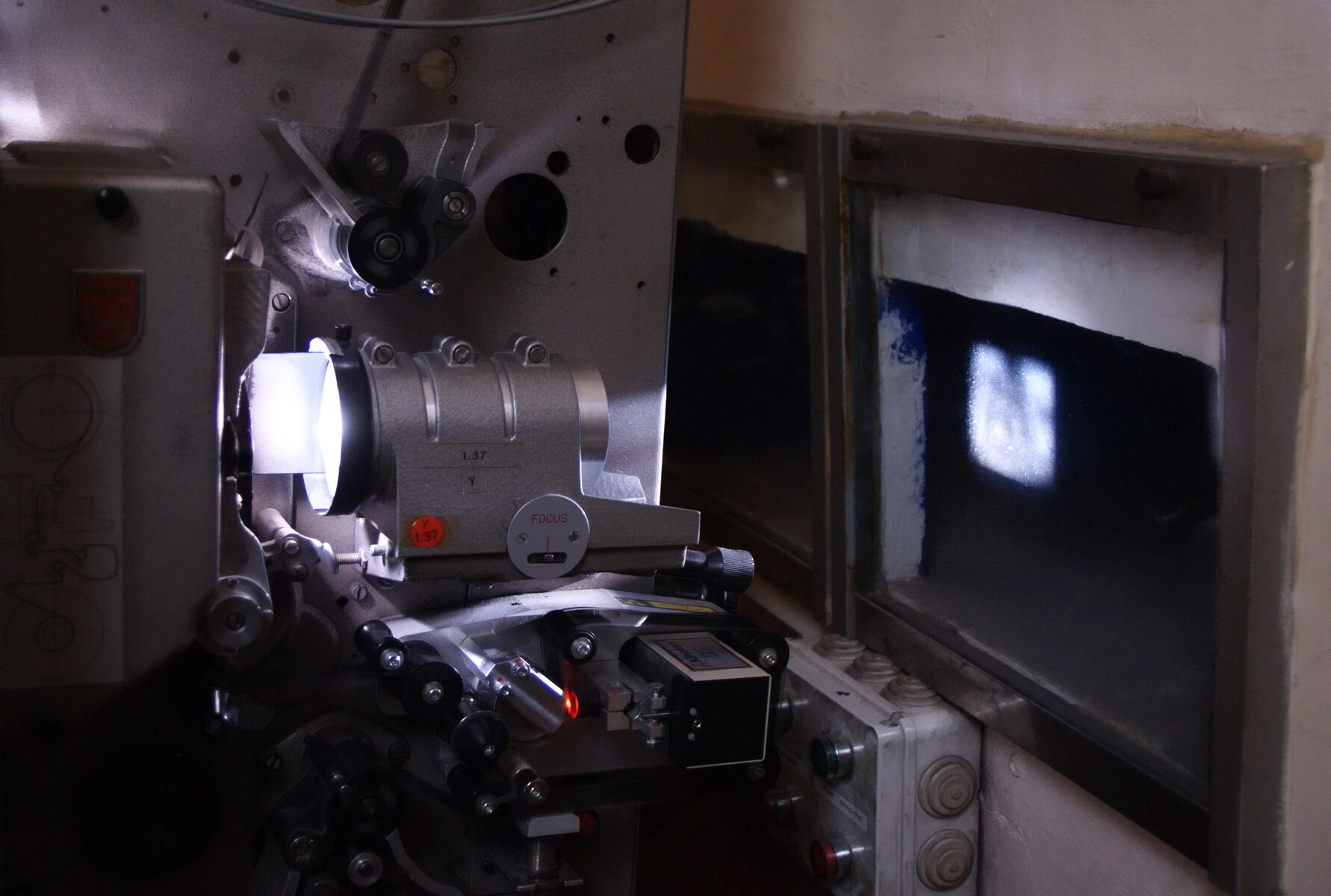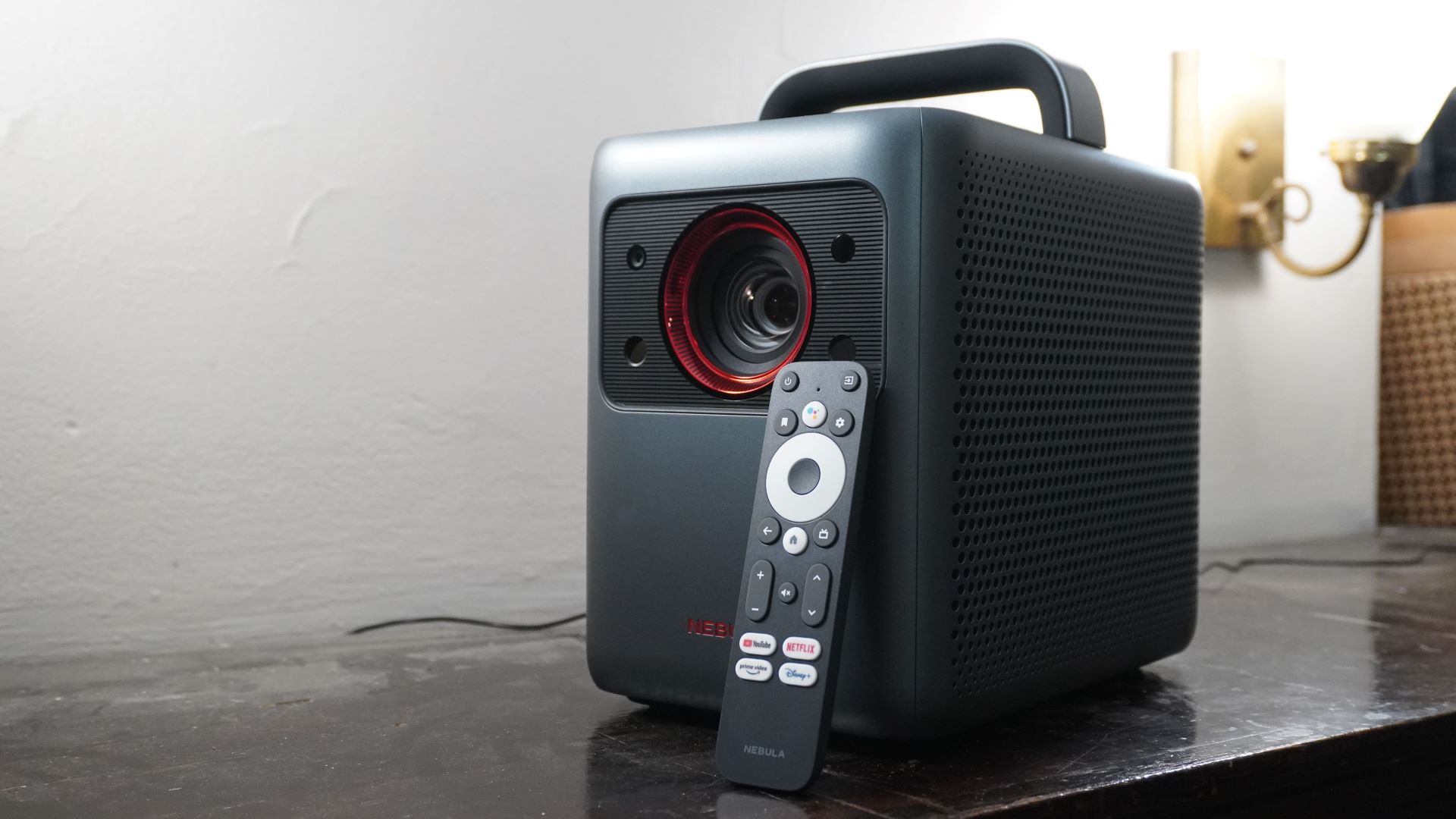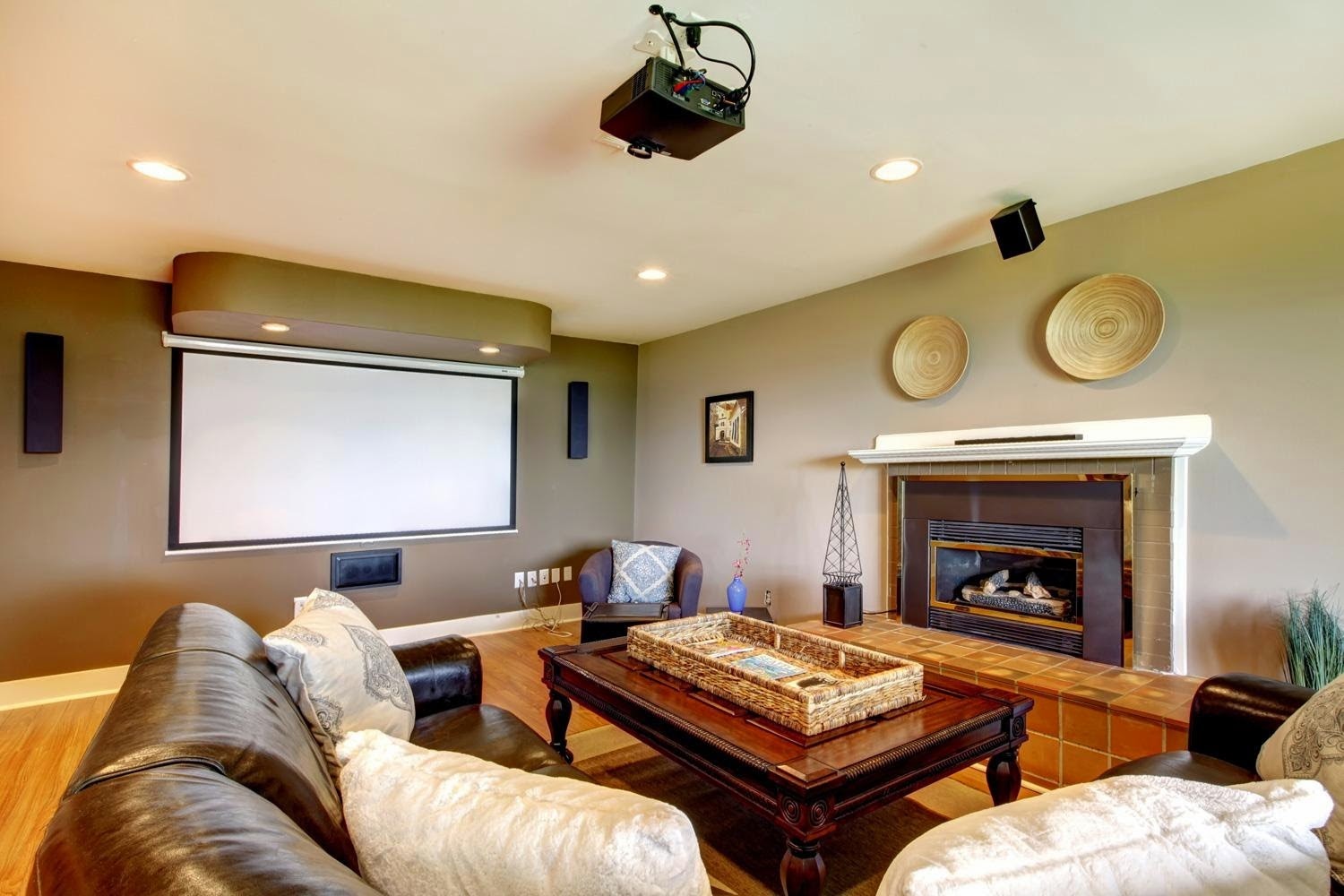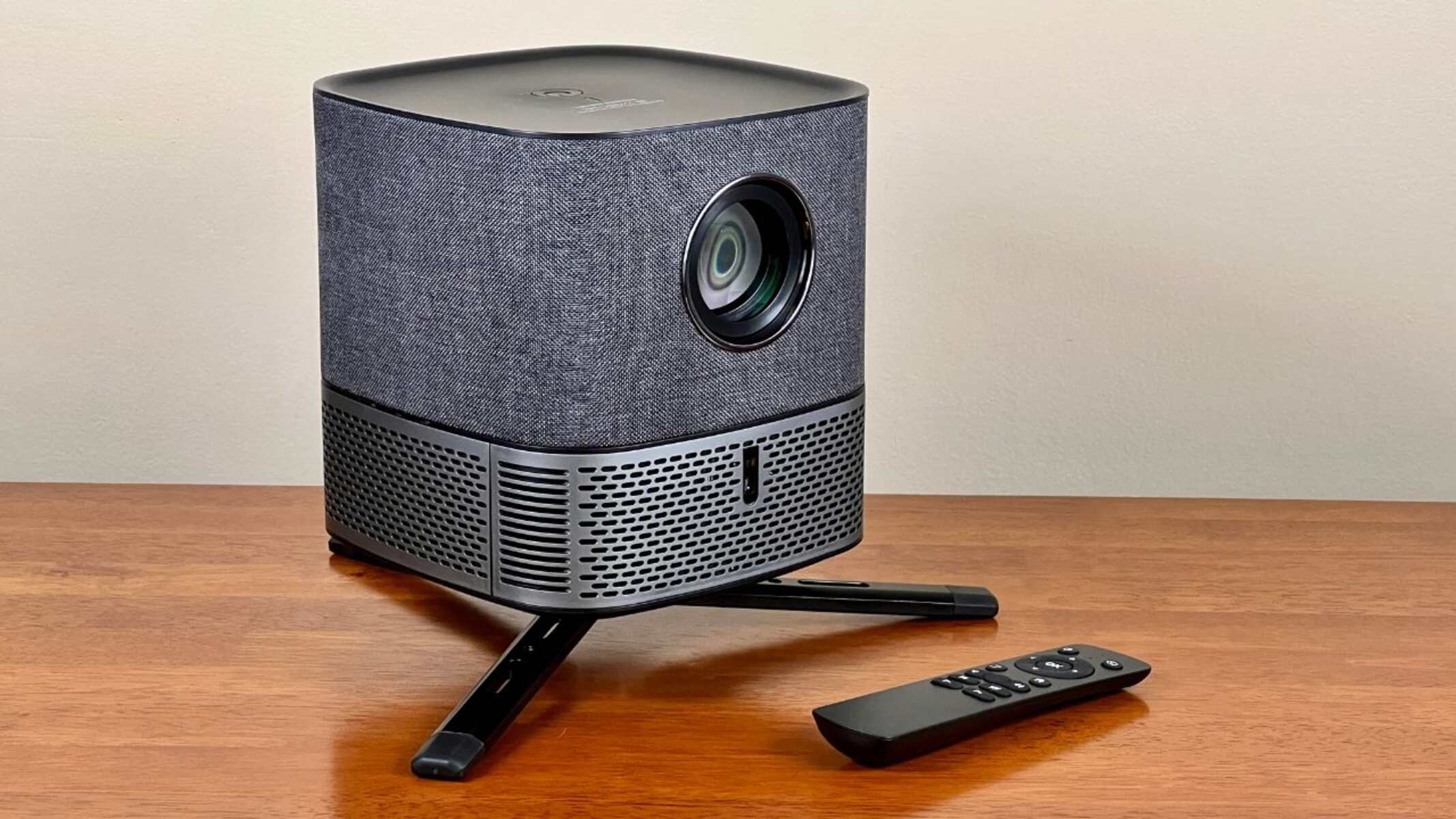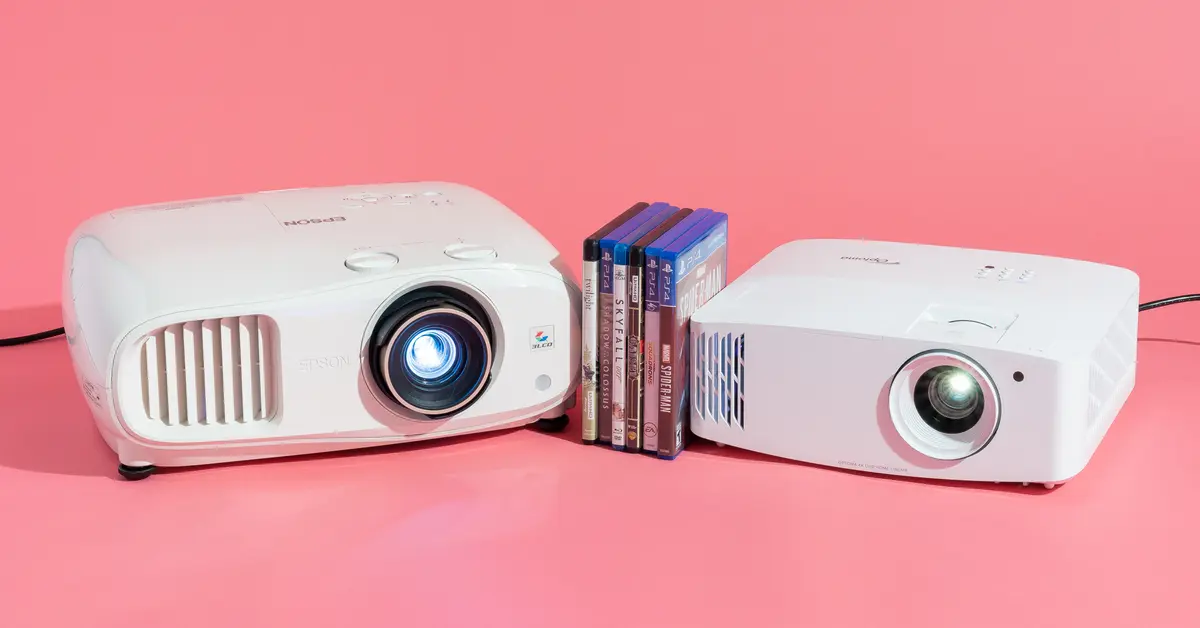Choosing the Right Projector
When it comes to watching movies on a projector, choosing the right one can make all the difference in your viewing experience. With so many options available, it can be overwhelming to know which projector to choose. Here are some factors to consider when selecting the perfect projector for your movie nights.
- Resolution: One of the most important factors to consider is the resolution of the projector. For a sharp and detailed image, aim for at least 1080p or higher resolution. This will ensure that you can see every detail of your favorite movies with clarity.
- Brightness: The brightness of the projector is essential, especially if you plan to use it in a room with ambient light. Look for a projector with a high lumen output to ensure a bright and vibrant image, even in well-lit environments.
- Contrast Ratio: The contrast ratio determines the difference between the darkest and brightest parts of the image. A higher contrast ratio will result in a more dynamic and lifelike picture. Look for projectors with a high contrast ratio for the best visual experience.
- Throw Distance: Consider the throw distance, which is the distance between the projector and the screen. Determine the size of the room where you plan to use the projector and choose a projector with the appropriate throw distance to ensure the desired screen size is achievable.
- Connectivity: Take into account the connectivity options of the projector. Ensure that it has the necessary ports to connect your desired devices, such as HDMI or USB, so you can easily connect your media sources.
- Noise Level: Pay attention to the noise level of the projector. A noisy projector can be distracting during movie viewing. Look for projectors with quiet operation, or consider placing the projector further away from the seating area to minimize noise disruption.
By carefully considering these factors, you can choose a projector that meets your specific needs and enhances your movie-watching experience. Keep these points in mind when comparing different projector models, and you’ll be well on your way to creating your own home theater.
Setting Up the Projector
Setting up your projector correctly is crucial to ensure optimal performance and an enjoyable movie-watching experience. Here are the steps to follow when setting up your projector:
- Choose the Projection Surface: Select a suitable projection surface, such as a blank white wall or a projector screen, for the best image quality. Ensure that the surface is smooth and free from any obstructions or textures that could affect the image.
- Position the Projector: Place the projector on a stable surface, such as a table or a projector mount, at the appropriate distance from the projection surface. Refer to the projector’s manual for the recommended distance and positioning guidelines.
- Adjust the Keystone: Most projectors have a keystone adjustment feature to correct any distortion caused by an uneven projection surface or improper positioning. Use the keystone correction settings to align the image and make it appear rectangular rather than trapezoidal.
- Fine-tune the Focus: Use the projector’s focus adjustment to make the image sharp and clear. Adjust the focus until the details are crisp and well-defined.
- Secure the Cables: Make sure all the necessary cables, such as the power cord, HDMI cable, and audio cables, are securely connected to the projector and the media source devices. Organize the cables neatly to avoid any tripping hazards.
- Test the Image: Turn on the projector and play a test image or video to check if the picture is properly displayed on the projection surface. Adjust the position, focus, and keystone settings if needed until you achieve the desired image quality.
- Consider Lighting Conditions: Dim the room lights or use blackout curtains to create a dark environment that enhances the contrast and overall picture quality. Minimizing ambient light will make the projected image appear more vibrant and vivid.
Follow these steps to ensure your projector is set up correctly for an immersive movie-watching experience. Take the time to fine-tune the settings and make any necessary adjustments to achieve the best possible picture quality. With proper setup, you’ll be ready to enjoy movies on your projector like never before.
Connecting Your Devices to the Projector
Once you have set up your projector, the next step is to connect your devices for seamless movie playback. Here’s a guide on how to connect your devices to the projector:
- HDMI Connection: The most common and straightforward way to connect your devices is through an HDMI cable. Most modern projectors have HDMI ports that allow you to easily connect devices like laptops, Blu-ray players, or streaming devices. Simply plug one end of the HDMI cable into your device and the other end into the HDMI port on the projector.
- VGA or DVI Connection: If your device doesn’t have an HDMI port, you can use a VGA or DVI cable to connect it to the projector. Check the available ports on both your device and the projector to determine which cable you need. Keep in mind that VGA and DVI connections may not support audio, so you may need to use a separate audio cable to connect the device to external speakers for sound.
- Wireless Connection: Some projectors offer wireless connectivity options, allowing you to stream content directly from compatible devices. Check if your projector supports Wi-Fi or Bluetooth connectivity and follow the manufacturer’s instructions to establish a wireless connection.
- Streaming Devices: Another convenient option is to use a streaming device, such as a Roku, Amazon Fire Stick, or Chromecast. Connect the streaming device to the projector via HDMI and use the device’s streaming capabilities to access your favorite online movie platforms, such as Netflix or Hulu.
- External Speakers: While projectors usually have built-in speakers, they may not provide the best audio quality. For a more immersive sound experience, consider connecting external speakers to your projector. Use the audio output of your device or connect the speakers directly to the projector, if it has an audio output port.
- Multiple Devices: If you have multiple devices that you want to connect to the projector, consider using an HDMI switcher or an AV receiver. These devices allow you to connect multiple sources to a single HDMI input on the projector, making it easier to switch between devices without having to constantly unplug and re-plug cables.
By following these steps, you can conveniently connect your devices to the projector and enjoy your favorite movies on the big screen. Whether you’re using HDMI, VGA, wireless, or streaming devices, make sure all connections are secure and properly calibrated to ensure optimal performance.
Adjusting the Picture Quality
Once your devices are connected to the projector, it’s important to adjust the picture quality to ensure the best possible viewing experience. Here are some tips for adjusting the picture quality:
- Aspect Ratio: Check the aspect ratio settings on both your device and the projector. The aspect ratio should match the content you’re watching to avoid stretching or distortion. Most movies are in a widescreen 16:9 aspect ratio, but older movies or certain video formats may have a different aspect ratio.
- Brightness & Contrast: Adjust the brightness and contrast settings on the projector to find the right balance. Increase the brightness if the image appears too dim, but be careful not to overexpose it. Likewise, adjust the contrast to enhance the difference between light and dark areas, making the image more vibrant and detailed.
- Color Temperature: Experiment with the color temperature settings to achieve the desired color accuracy. Some projectors offer preset modes like “Cinema” or “Sports” that automatically adjust the color temperature for specific viewing scenarios.
- Color Saturation & Hue: Fine-tune the color saturation and hue to ensure accurate and vivid colors. Avoid oversaturating the colors, as it can make the image appear unnatural. Adjust the hue to correct any color imbalances and make the image look more natural.
- Sharpness: Adjust the sharpness settings to optimize the image clarity. Be aware that excessive sharpness can introduce artifacts or make the image appear too artificially enhanced. Find a balance that maintains a clear and natural image without compromising fine details.
- Keystone Correction: If the projector is positioned at an angle, use the keystone correction feature to align the image and make it appear straight and rectangular. Adjust the keystone correction settings until the image appears properly proportioned.
- Projection Distance and Size: If you need to adjust the projection size or distance, refer to the projector’s manual for instructions on how to do so. Changing the projection size or distance can affect the image quality, so take the time to calibrate it to your desired specifications.
By taking the time to adjust the picture quality, you can enhance the overall movie-watching experience. Experiment with the settings and find the optimal combination that suits your preferences and offers the most accurate and visually appealing image.
Configuring the Sound
In addition to adjusting the picture quality, configuring the sound is essential to create an immersive movie-watching experience when using a projector. Here are some steps to follow when setting up and configuring the sound:
- Audio Output Selection: Determine the audio output source from your connected device. Some projectors have built-in speakers, while others may require external speakers or a sound system. Choose the appropriate audio output option based on your setup.
- External Speakers: If you opt for external speakers, connect them to your device or directly to the projector if it has an audio output port. Ensure the speakers are positioned properly in your viewing area for the best sound distribution.
- Audio Calibration: Adjust the volume settings on your device, projector, or external speakers to achieve the desired sound level. Test different volume levels to find the optimal balance between dialogue, background music, and sound effects during movie playback.
- Equalizer Settings: Some projectors and audio devices offer equalizer settings to fine-tune the sound characteristics. Experiment with the equalizer presets or manually adjust the settings to enhance certain frequencies, such as bass or treble, for a more tailored audio experience.
- Surround Sound: If you have a surround sound system, connect it to your device or the projector to enjoy a more immersive audio experience. Check the settings on your device or sound system to ensure that surround sound output is enabled, allowing you to fully appreciate the movie’s audio effects.
- Audio Source Selection: If you have multiple audio sources connected to the projector, such as a Blu-ray player and a gaming console, check the audio source selection settings to ensure the sound is routed correctly. Change the audio source when switching between different devices to avoid any sound issues.
- Audience Seating: Position your seating arrangements in the optimal listening position, taking into consideration the location of the speakers and the projector. This will help ensure that everyone can fully experience the surround sound or stereo effect, depending on your setup.
By configuring the sound effectively, you can elevate the overall movie-watching experience. Take the time to adjust the audio settings to match your preferences and the capabilities of your setup. Whether it’s through external speakers, surround sound systems, or optimized volume levels, good sound quality will complement the visual experience of watching movies on your projector.
Selecting the Right Source for Movies
When it comes to watching movies on a projector, selecting the right source is essential to ensure a wide range of quality content. Here are some popular sources to consider:
- Blu-ray and DVD: Physical media such as Blu-ray and DVD discs offer high-quality video and audio. Invest in a good Blu-ray player and build a collection of your favorite movies to enjoy on your projector.
- Streaming Services: Streaming services like Netflix, Amazon Prime Video, Hulu, and Disney+ provide an extensive library of movies and TV shows that can be accessed with an internet connection. Some projectors even have smart features or built-in streaming apps, making it convenient to stream directly from the projector.
- Digital Downloads and Rentals: Platforms like iTunes, Google Play Movies, and Vudu allow you to purchase or rent digital copies of movies, which can be downloaded and played on your projector. This option provides flexibility and convenience for accessing a wide range of movies.
- External Media Players: Connect external media players, such as media streamers or game consoles, to your projector to access various movie streaming apps and platforms. This gives you the flexibility to choose from different sources and enjoy a wide variety of content.
- Media Servers or NAS Drives: Set up a media server or network-attached storage (NAS) drive to store your movie collection. This gives you the freedom to access your movies from any device connected to the same network, including your projector.
- Cable or Satellite TV: If you have a cable or satellite TV subscription, connect the set-top box to your projector to access live TV channels and on-demand content. This is a convenient option for enjoying movies provided by TV networks and cable/satellite providers.
- Personal Video Collection: Digitize your personal movie collection by ripping DVDs or Blu-rays to your computer, creating a digital library that can be played back on your projector. This is a great option for preserving and accessing your favorite movies without the need for physical discs.
Consider your preferences, budget, and the availability of content when selecting the right source for movies. Whether it’s physical media, streaming services, digital downloads, or personal collections, choose the option that best suits your needs and provides a diverse selection of quality movies to enhance your projector viewing experience.
Finding Movies to Watch
With a projector set up and your preferred source ready, it’s time to find exciting movies to watch. Here are some tips to help you discover new films and find the perfect ones for your movie nights:
- Genre Recommendations: Consider your preferred movie genres and explore recommendations within those genres. Whether you enjoy action, comedy, drama, sci-fi, or horror, there are countless movies to choose from within each genre. Look for popular movies, classics, or hidden gems that fit your taste.
- Review Aggregator Websites: Visit review aggregator websites like Rotten Tomatoes, IMDb, or Metacritic to get an idea of the critical and audience reception of movies. These websites bring together reviews and ratings from various sources, providing insights into the overall quality and appeal of a film.
- Friends and Family Recommendations: Ask friends, family, or colleagues for movie recommendations. Personal recommendations can be valuable, as they come from people who have similar tastes or have discovered unique movies worth watching.
- Curated Movie Streaming Platforms: Explore curated movie streaming platforms like Mubi, Criterion Channel, or FilmStruck. These platforms offer a collection of hand-picked movies ranging from classic masterpieces to contemporary indie films, ensuring a unique and diverse selection of titles.
- Movie Blogs and Online Communities: Follow movie blogs and participate in online communities dedicated to film discussions. These platforms provide a wealth of information, including reviews, recommendations, and discussions about upcoming releases and hidden gems.
- Film Festivals and Awards: Stay updated with film festivals and awards ceremonies to discover new and acclaimed movies. Many independent films gain recognition and exposure through film festivals, and award-winning movies often highlight exceptional storytelling and filmmaking.
- Movie Trailers and Teasers: Watch movie trailers and teasers to get a glimpse of upcoming releases or films that catch your interest. These previews provide a sneak peek into the movie’s plot, visuals, and overall tone.
- Movie Recommendation Engines: Utilize movie recommendation engines like Netflix’s personalized recommendations or platforms like Letterboxd. These engines analyze your viewing history and preferences to suggest movies that you are likely to enjoy.
- Explore Filmography of Favorite Actors or Directors: If you have favorite actors or directors, explore their filmography for movies you haven’t watched yet. This is a great way to discover movies that align with your preferences and to explore different genres and styles.
- Follow Movie Reviewers and Critics: Follow reputable movie reviewers and critics on social media platforms or subscribe to their channels or blogs. These individuals often share insightful reviews and recommendations, helping you discover movies you may have overlooked.
With these tips in mind, you can find a wide range of movies to enjoy on your projector. Explore different sources, genres, and recommendations to create a diverse and memorable movie-watching experience.
Tips for a Great Movie Watching Experience
To make the most of your movie-watching experience on a projector, consider the following tips that can enhance your enjoyment and create a truly immersive atmosphere:
- Create a Comfortable Viewing Environment: Set up a comfortable seating arrangement with adequate cushions and blankets to enhance your comfort during the movie. Consider dimming the lights or using blackout curtains to create a dark environment that enhances the contrast and colors on the screen.
- Optimal Viewing Distance: Position yourself at an appropriate distance from the screen to ensure that you can see the details clearly without straining your eyes. Refer to the projector’s manual or online resources for recommended viewing distances based on the screen size and resolution.
- Sound Considerations: Pay attention to your audio setup and adjust the volume level accordingly. Ensure that the sound is clear and balanced, immersing you in the movie’s audio effects. Avoid distractions from background noise by turning off unnecessary devices or appliances.
- Snacks and Refreshments: Create a movie theater-like experience by having your favorite snacks and refreshments on hand. Whether it’s popcorn, candy, or a refreshing beverage, having these treats can enhance your enjoyment and make the experience more delightful.
- Minimize Distractions: Turn off your phone or put it on silent mode to minimize distractions during the movie. Create a dedicated space for movie viewing, away from any potential disturbances, as it helps maintain focus and engagement with the film.
- Engage in Movie Discussion: If watching with others, engage in discussions before and after the movie to share opinions, interpretations, and favorite moments. This can enhance the overall experience and deepen appreciation for the art of storytelling in films.
- Movie Theme Nights: Add a touch of creativity by organizing movie theme nights. Pick a genre or a series of movies from a particular director or actor to create a cohesive viewing experience. Decorate the room accordingly, dress up, and complement the movie selection with themed snacks and drinks.
- Explore Different Movie Genres: Don’t limit yourself to a particular genre. Explore movies from different genres to expand your cinematic horizon and discover hidden gems that might surprise you.
- Take Breaks if Needed: If watching a long movie or having a movie marathon, take breaks when necessary. It’s important to rest your eyes and stretch your legs to maintain comfort and avoid fatigue.
- Immerse Yourself in the Movie: Allow yourself to fully immerse in the movie’s world. Let go of distractions and engage mentally and emotionally with the storyline, characters, and visuals. This immersive experience can enhance your connection with the film and make the viewing more memorable.
By applying these tips, you can create a memorable and enjoyable movie-watching experience on your projector. Remember to personalize and adapt these suggestions to your own preferences, creating an atmosphere that enhances your overall enjoyment of the movie.
Troubleshooting Common Issues
While watching movies on a projector can be a fantastic experience, there may be times when you encounter common issues that can affect your viewing. Here are some troubleshooting tips to help you overcome these challenges:
- No Picture: If the projector isn’t displaying any picture, check the video source and cables to ensure they’re properly connected. Make sure the projector is turned on and check that the input source is selected correctly. If the issue persists, try resetting the projector to its default settings or consult the user manual for further troubleshooting steps.
- Poor Image Quality: If the image appears blurry, dim, or distorted, first check the focus and keystone settings to ensure they’re properly adjusted. Clean the projector lens and check for any obstructions or dust that may be affecting the image quality. In some cases, adjusting the brightness, contrast, and color settings can also improve the picture quality.
- No Sound: If you’re not getting any sound from the projector, check the audio cables and connections to ensure they’re correctly plugged in. Adjust the volume settings on both the projector and any external speakers. Ensure that the audio source is selected correctly and that the media device is outputting audio to the projector.
- Overheating: If your projector starts to overheat, it may shut down or display an alert message. Check that the projector has proper ventilation and is not blocked by any objects. Clean the air vents and ensure they’re free from dust or debris. Avoid using the projector in high-temperature environments and make sure it has adequate cooling time between uses.
- Remote Control Malfunctions: If the remote control is not functioning correctly, check the batteries and replace them if necessary. Ensure that there are no obstructions between the remote and the projector. If the issue persists, try resetting the remote control or consult the user manual for troubleshooting instructions.
- Noisy Fan: If the projector’s fan is excessively loud, check if the noise is due to a build-up of dust or debris. Clean the projector’s air vents and filters to improve airflow and reduce fan noise. If the noise continues, consult the manufacturer or contact customer support for further assistance.
- Compatibility Issues: Some devices or media formats may not be compatible with the projector. Ensure that the device and media file formats are supported by the projector. If there are compatibility issues, try using a different media player or converting the file format to a compatible one.
- Issues with Connectivity: If the projector is not connecting to your devices, ensure that the cables are securely plugged in and that you’re using the correct input source on the projector. Restart both the projector and the device you’re trying to connect to. If the problem persists, try using a different cable or consult the projector’s manual for troubleshooting tips specific to your model.
- Lamp Replacement: Over time, the projector lamp may dim or stop working. Refer to the user manual to determine the lifespan of the lamp and instructions on how to replace it. When replacing the lamp, make sure to follow proper safety procedures and ensure that the projector is turned off and has sufficiently cooled down.
- Consulting Manufacturer Support: If you’re unable to troubleshoot and resolve an issue on your own, reach out to the manufacturer’s customer support. They can provide more specific guidance based on your projector’s make and model, helping you address any persistent or complex issues you may be experiencing.
By following these troubleshooting tips, you can address common issues that may arise when using a projector. Remember to refer to the manufacturer’s documentation and consult customer support whenever necessary for more specific guidance.
Conclusion
Watching movies on a projector offers a unique and immersive experience that can recreate the atmosphere of a movie theater in the comfort of your own home. By choosing the right projector, setting it up correctly, connecting your devices, adjusting the picture and sound quality, and finding the right sources and movies to watch, you can create a truly exceptional movie-watching experience.
Remember to consider factors like resolution, brightness, contrast ratio, and connectivity options when selecting a projector. Take the time to set up the projector properly, adjusting the keystone, focus, and ensuring secure cable connections. Experiment with picture adjustments like aspect ratio, brightness, contrast, color temperature, and sharpness to optimize the visual experience.
When configuring the sound, consider the audio source, external speakers, audio calibration, and surround sound settings to create a captivating audio environment. Choose the right source for movies, whether it’s physical media, streaming platforms, digital downloads, or external media players, and explore various genres and recommendations to expand your movie library.
To enhance your movie-watching experience, follow tips for creating a comfortable viewing environment, optimizing your seating position, and avoiding distractions. Engage in discussions, organize theme nights, and fully immerse yourself in the movie to deepen your appreciation for the art of cinema.
While troubleshooting common issues such as no picture, poor image quality, sound problems, or connectivity issues, refer to the manufacturer’s documentation and customer support for guidance. By being proactive in addressing these issues, you can ensure a smooth and enjoyable movie-watching experience.
So, get ready to transform your living room into a personal movie theater and embark on a journey of cinematic adventures. With the right projector, setup, and movie selection, you can create memories and have unforgettable movie nights that rival the big screen experience.







